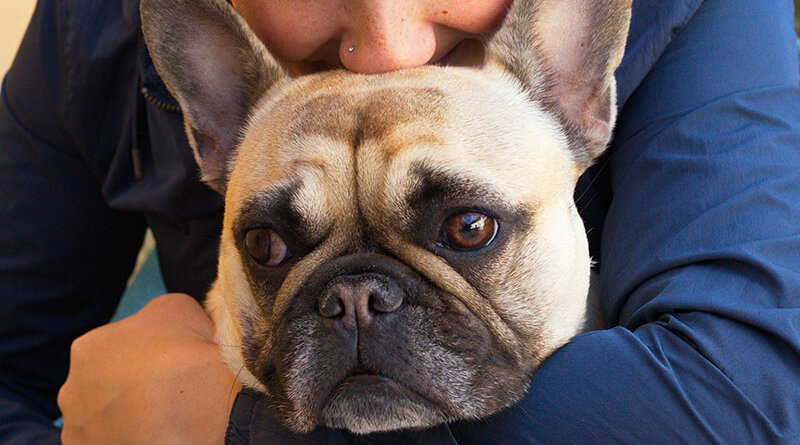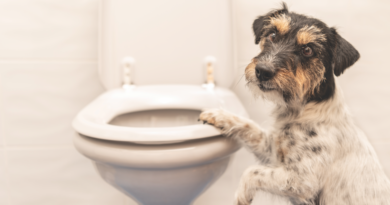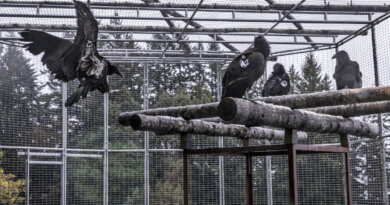7 Things You Do That Your Dog Hates
From a dog’s POV, humans can be perplexing. Convinced that our dogs value the same sorts of affectionate gestures as we do, we kiss them, we hug them, we buy (and make them wear) little hats and dresses. It’s not too far-fetched to say that they’d pass on a lot of these things if given a choice.
Things You Do That Your Dog Hates
Here are a few things on most dogs’ “no thank-you” list—things they wish we wouldn’t do.
1. Pat them on the head.
It’s a gesture meant to convey affection, and many people love to do it. But patting our dogs on the head is not popular with them. Most of them dislike it and will move away to avoid it. They do usually enjoy having their heads—including their ears and the sides of their faces—smoothly stroked, which is more likely to make them happy, keep them near and cause them to lean in for more.
2. Hug them.
Every time a dog trainer or canine behaviorist mentions that dogs don’t generally like being hugged, the pushback is incredible. Everyone is sure their dog loves to be hugged even if most dogs don’t, and they suspect most dogs actually do love it. Primates (the order to which we belong) are huggers, but canids, including dogs, don’t naturally engage in that behavior. While I sometimes feel like a wicked witch when I point this out to people, observation suggests it’s true. Dogs who are being hugged often display signs of stress, including tongue flicks, a tightly closed mouth, pulled-back ears, rigid facial muscles and/or a furrowed brow. Putting your arms around your dog’s neck and shoulders may feel like love to you, but to dogs, not so much.
GET THE BARK IN YOUR INBOX!
Sign up for our newsletter and stay in the know.
3. Hoard the ball during a game of fetch.
Many of us tend to pick up the ball and hold it while we praise or pet our dog. We think we’re playing fetch, but our dogs think we’re hoarding the ball. They want it back, and they want it back now. Many dogs lose interest in fetch or fail to learn how fun it can be because of this human tendency to hold onto the ball instead of immediately throwing it. What they want us to do is to toss the ball the instant they drop it anywhere in our vicinity. This sounds simple, but it can be a struggle for many people.
4. Kiss them.
Humans express love and affection with kisses, but kisses have no particular meaning to dogs. It is not a natural part of their repertoire. Dogs lick each other and will lick humans, too, and though we often call those “doggy kisses,” they’re different than human kisses. Putting your face right next to a dog’s face can be perceived by the dog as a threatening behavior. Some dogs find it scary, others simply find it annoying. It’s common for dogs who are being kissed to try to get away; to hold their ears back; or to exhibit signs of discomfort such as tongue-flicking, yawning, lowering the tail or displaying facial and body tension. Some dogs wrinkle their noses or even scamper off once released—another sign that—no matter how much they may love you—they don’t love being kissed.
5. Hold one of their paws, especially a back paw, when they’re standing.
Dogs who’ve been consistently reinforced for shaking or giving a high-five may have good feelings about having you touch or hold their paws, but that usually only applies to brief contact while they’re sitting. What I’m talking about here is grabbing a dog’s paw when he’s standing, then holding onto it for a while. To most dogs, nothing good can come of that. It may make them feel unstable, and that’s no fun, or they may associate it with nail trims (also no fun) or having their muddy paws wiped down (not awful, but not a favorite either). Holding a dog’s back paw is often particularly poorly received. Most behaviorists agree that male dogs are, in general, more likely to take exception to having a paw held than are female dogs.
6. Use citrus-scented products.
The majority of dogs dislike the smell of oranges, lemons, tangerines and grapefruit. That’s why those scents are used in products meant to deter dogs from chewing on things we would prefer they leave alone. Since the smell repels dogs, it’s kind to avoid products with that scent, including lotion, shampoo, air fresheners or candles. Yet, a small percentage of dogs aren’t averse to these smells. Find out if your dog is in this group by peeling a juicy orange so your hands are covered in a sticky mess, then offer your hands to your dog. If she turns or backs away, she (like most dogs) doesn’t care for the smell of citrus. If she licks your fingers, different story.
7. Dress them.
The joy people take in dressing up their dogs is often in direct conflict with the distaste dogs have for the experience. Yes, dogs look adorable in just about every outfit under the sun, but very few dogs enjoy the process of being put into clothes and costumes. Lots of dogs tense up, displaying facial expressions and body language that clearly indicate their discomfort. Wearing clothes, especially cumbersome and constricting costumes, is a misery for many dogs. Through a careful process of conditioning, dogs can be taught to accept costumes or other clothes, and we can make it easier for them by choosing the least restrictive and most lightweight options, but avoiding it altogether would be the choice of almost all dogs. Many humans (including me!) can’t help but love the look of dogs dressed to the nines, but mostly, it’s better not to treat dogs like dolls.




